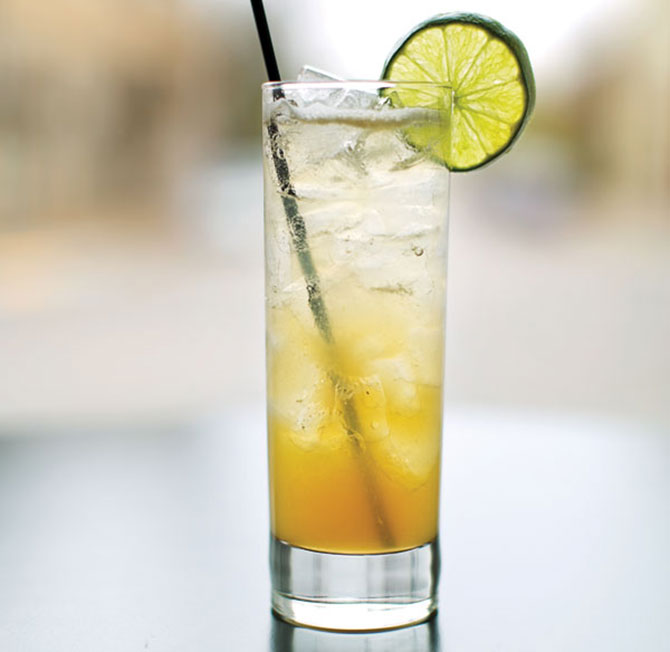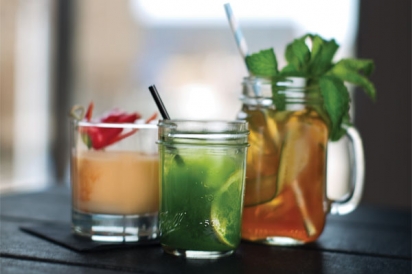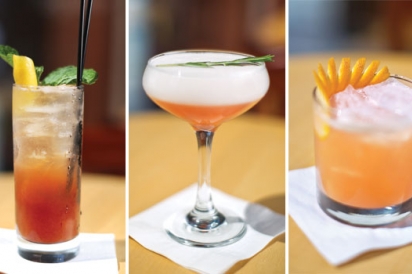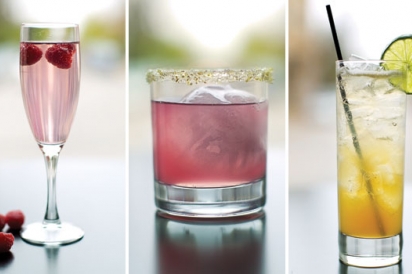Mocktail Culture: Raise Your Glass to Pittsburgh’s Latest Beverage Trend
Pittsburgh’s craft cocktail renaissance knows no limits. Having flourished alongside the city’s culinary scene, the gravitation towards quality, hand-crafted beverages has become a meteoric movement all its own. Integral to that movement are fresh, seasonal ingredients, loyally provided by our region’s farms; an enthusiastic customer base with a curious palate; and the kind of avant-garde creativity found only in the most seasoned chefs and bartenders. This summer, we’re diving head first into a sea of local libations to explore the cocktail’s closest relative, sans alcohol. Light, refreshing, and rich with flavor, the mocktail offers a sophisticated tasting experience unlike any other. Here, we invite you to shake up your beverage routine, with tips, tricks, and recipes straight from the experts. As with any new venture, we say, don’t mock it before you try it.
THE INGREDIENTS
On our quest to find the city’s finest mocktails, we quickly discovered just what distinguishes them from competing non-alcoholic drinks. “It’s all about the ingredients,” says Will Groves, bar manager at Legume’s full-service bar, Butterjoint. “Ten years ago, using fresh ingredients to make drinks was not the expectation. Now it is.” Like many of the independently owned eateries in Pittsburgh, Legume has been fortunate enough to sustain viable relationships with several local farmers. The result? A steady supply of fresh produce — and, ultimately, better tasting drinks. Groves says that quality ingredients, such as Butterjoint’s house-made syrups, mixers, and liqueurs, are especially important to the composition of a mocktail, since alcohol can’t be used to add flavor. “If you can deliver a contemporary craft cocktail experience without using alcohol, I think that’s awesome.” An advocate of using five or fewer ingredients in his mocktails, Groves notes that he most enjoys incorporating Butterjoint’s homemade shrubs, which are a combination of macerated fruit juices and low-acidity vinegar. “The most common mocktail we make uses shrub and soda,” he adds.
A few neighborhoods over, Salt of the Earth Bartender Carissa Just experiments with different flavor combinations of her own. “The kitchen [staff] says that lavender, thyme, and lemon go together like peanut butter and jelly,” she says with a laugh. A longtime partner of Garfield Community Farm, Salt shares Legume’s commitment to sourcing locally. Explains Just, “It’s important for our guests to understand that what they’re eating and drinking comes from somewhere right up the road.” Behind the bar, she and two other bartenders work as a team to invent new, innovative mocktails, often looking to the kitchen for inspiration. “In our mocktails, we [at the bar] try to use everything the kitchen uses — whether it’s a plant, herb, grain, or natural flavoring.” Just tells us that versatile herbs are her favorite to use in drinks, since they can be easily transformed into either syrups or teas.
Jessica Keyser, director of operations at Union Pig & Chicken and its adjacent sister bar, Harvard & Highland, believes that the influx of seasonal products to our region’s restaurants has prompted the revival of the craft beverage. “There are better ingredients around for cocktails in general,” says Keyser. “And with mocktails, there’s definitely more of a play on seasonality.” Unique to the bar are lemonade and sweet tea, both made in-house to reflect Union’s barbecue-heavy menu, and both seemingly perfect mocktail ingredients. “Our lemonade mocktail is refreshing, and not too sweet,” Keyser adds. “Very sugary drinks don’t really pair well with anything.” In fact, avoiding sugar behind the bar is a welcomed challenge for Bartender Summer Voelker, who experimented with Jallab — a Middle Eastern syrup made from carob, dates, molasses, and rose water — to invent a truly unique mocktail of her own.
THE EXPERIENCE
Despite the mocktail’s intrigue, it’s fair to address the inevitable: why take the “happy” out of happy hour? Our experts say, the relationship many Pittsburghers have with our dining culture is shifting — perhaps to one more focused on ingredients and taste than on booze. “Going to restaurants means something different now than it used to, and there’s a really large population that doesn’t drink,” says Keyser. “Today, there’s a place in our culture for that population that didn’t exist for a while.” Groves says that for him, mocktails serve as a buffer of sorts during a night out. “I’ll do a round of bitters and soda with lime for every one cocktail I have,” he tells us. “You can maintain your [social] experience without ramping up your level of drunkenness for an entire night.” This idea of sophistication in a glass seems to be popularizing quickly, and surprisingly, within a younger demographic. Notes Keyser, “Restaurants are getting a younger crowd. Oftentimes, [that crowd] wants something that looks cool in a glass, but that won’t wreck their night.” At Salt, Just reports similar experiences. “Young people order our mocktails just to try something different.” She also says that kids have been known to enjoy the mocktail menu as well.
Clearly, the demand for hand-crafted, alcohol-free cocktails is expanding. A beverage once regarded as one intended only for expecting mothers, the mocktail is reaching new heights — and new audiences. “Not everybody likes to drink soda,” says Just, “and not everybody always wants to drink booze.” Enter the mocktail: a stepping stone for folks seeking innovative, seasonal ingredients by way of a refreshing, guilt-free beverage. Like Just and Groves, Keyser is committed to putting as much time and care into her mocktails as anything else on the menu. “Mocktails shouldn’t be a throw-away, an afterthought, or something you offer to fill a niche,” she says. For bars and restaurants, appealing to a diverse market is essential to developing meaningful relationships with customers. It’s also a way for bartenders — the majority of whom are extremely passionate about what they do — to get in touch with their artistic sides. “Mocktails allow creative bartenders to reach more people and to show themselves off to a crowd who wouldn’t ordinarily buy a drink,” explains Keyser. “In a way, [mocktails] are the appetizers of the cocktail world; similar to small plates. They let you sample others’ talent without losing control in the process.”
BARTENDING 101: MAKE YOUR OWN MOCKTAIL!
We asked: What advice would you give to our readers who want to make mocktails at home?
Will Groves: “Start fresh, and stay basic. Less is always more.”
Carissa Just: “Utilize what you have. There’s always something in your cabinet you can use — dried herbs can become syrups; fruits that are towards the end of their life can become purées. You can make anything!”
Jessica Keyser: “Keep it seasonal. A tomato in January just isn’t going to taste good. Use ingredients that make sense for the season because they’ll be the most intensely flavorful.”







